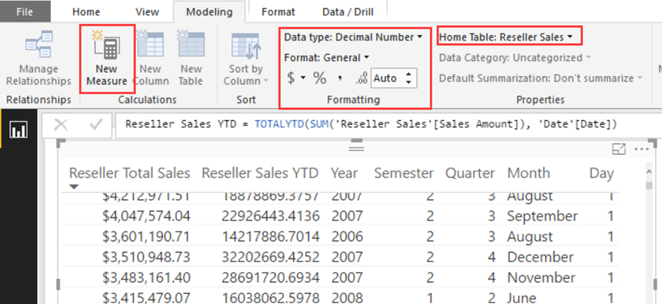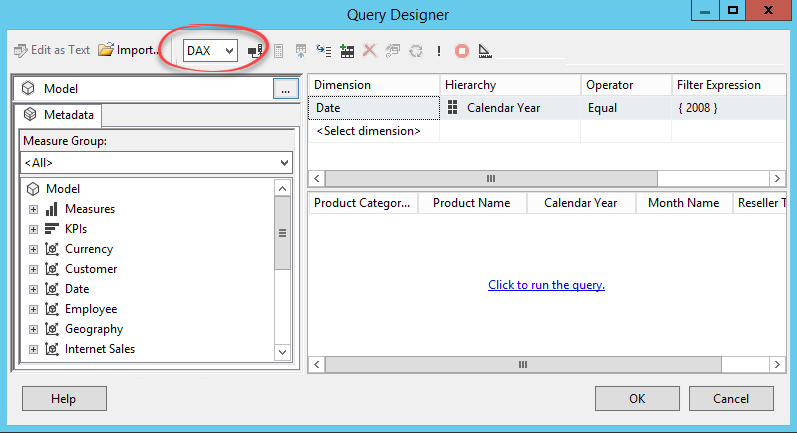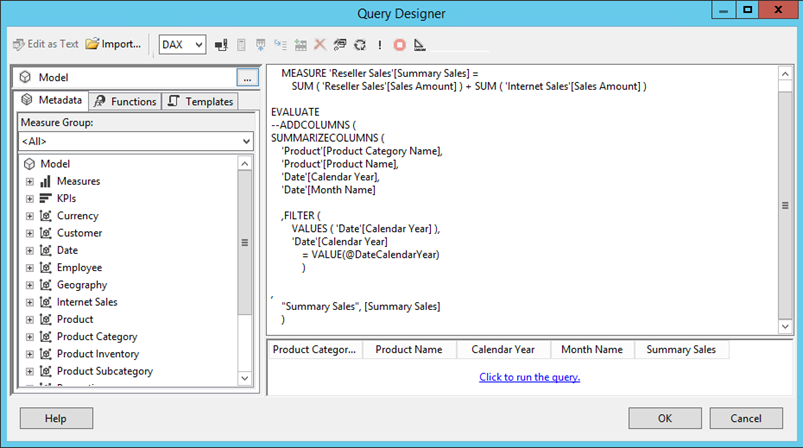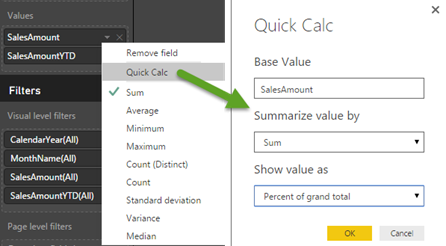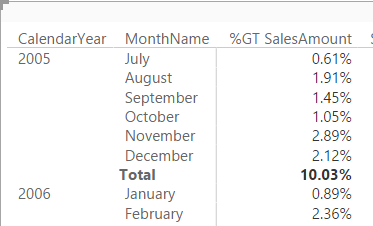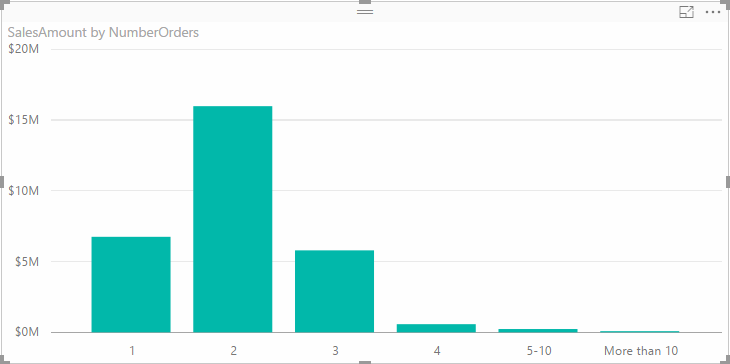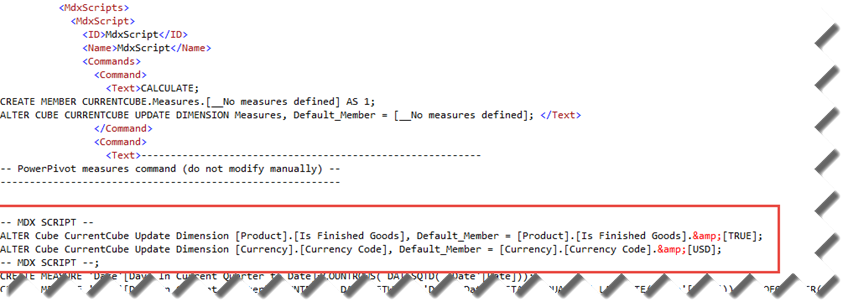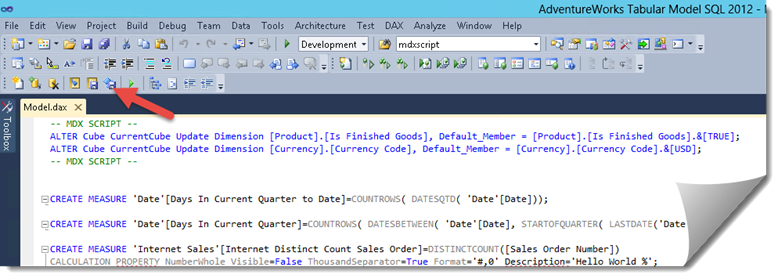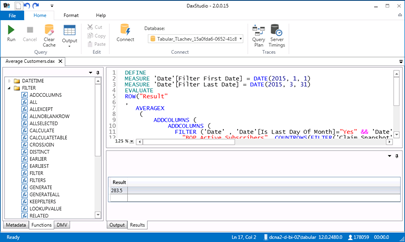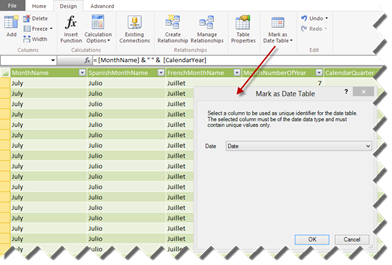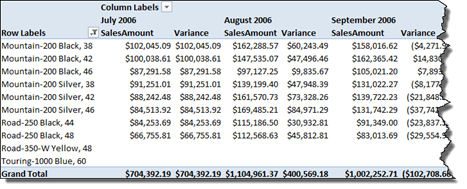Power BI Report Measures Over Tabular Models
The May release of Power BI Desktop adds the ability to define DAX calculated measures when Power BI Desktop is connected live to a Tabular model or Power BI datasets. This is conceptually similar to defining MDX calculated members in Excel connected to a cube. The measure definitions are local to the Power BI Desktop model (the Tabular model is not modified). You can do all measure-related tasks as when you define measures in the data model, such as changing the data type and formatting the measure or changing the home table. In the screenshot below, I’ve defined a YTD report measure over the Adventure Works Tabular model.
Behind the scenes, the DAX query generated by Power BI Desktop adds the measures as query-scoped measures in the /* USER DAX BEGIN/END */ section:
DEFINE MEASURE ‘Reseller Sales'[Reseller Sales YTD] =
(/* USER DAX BEGIN */
TOTALYTD(SUM(‘Reseller Sales'[Sales Amount]), ‘Date'[Date])
/* USER DAX END */)
EVALUATE
ROW(
“Reseller_Total_Sales”, ‘Reseller Sales'[Reseller Total Sales],
“Reseller Sales YTD”, ‘Reseller Sales'[Reseller Sales YTD]
)
Report-level measures are a welcome enhancement. Bringing this further, I’d like to see the ability to define report-level measures using the Quick Measure feature. Another feature that I’m waiting for is the ability to use custom measures (both defined in the model and report-level) in the new numeric range slicer (currently in preview).

